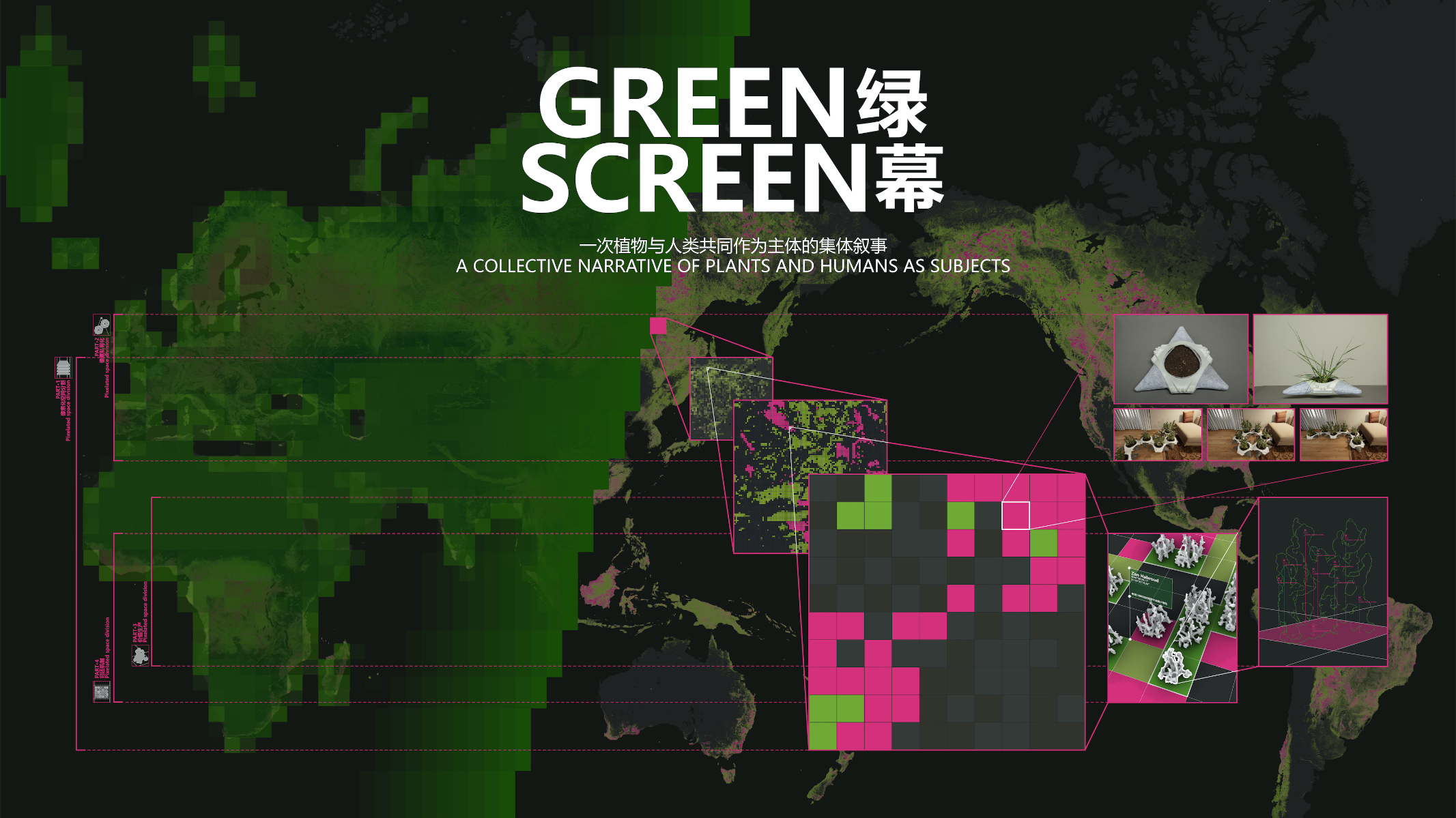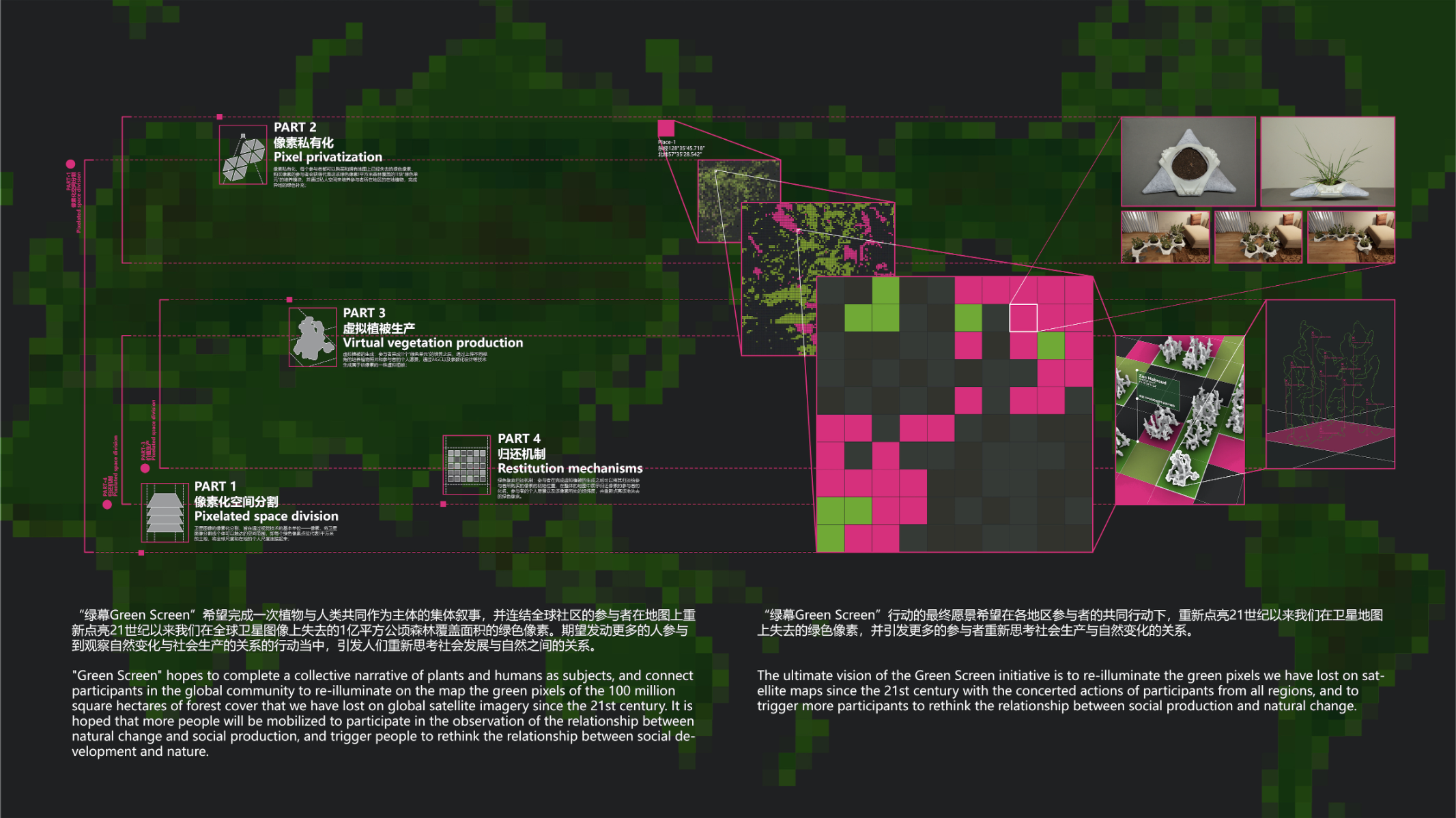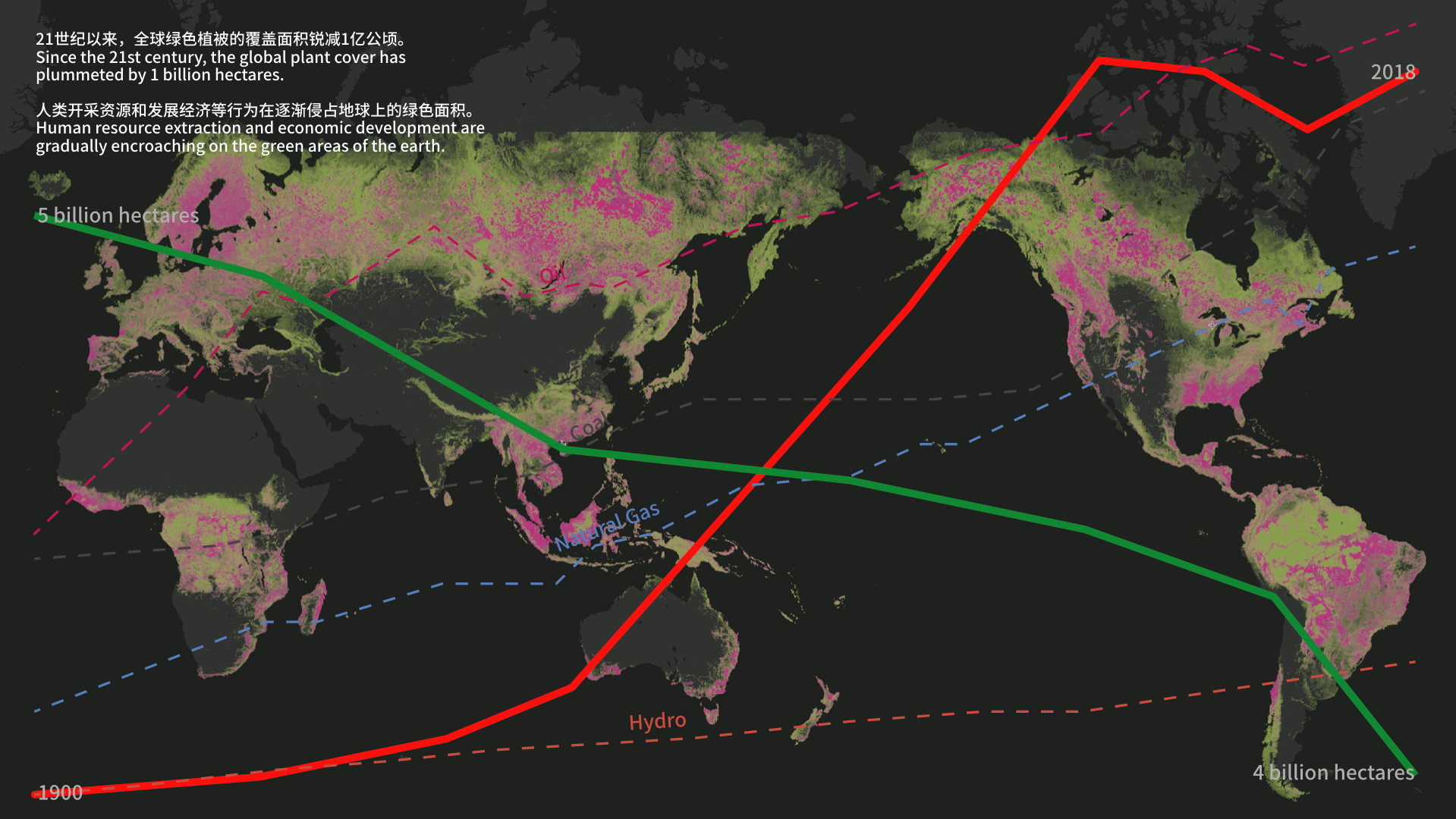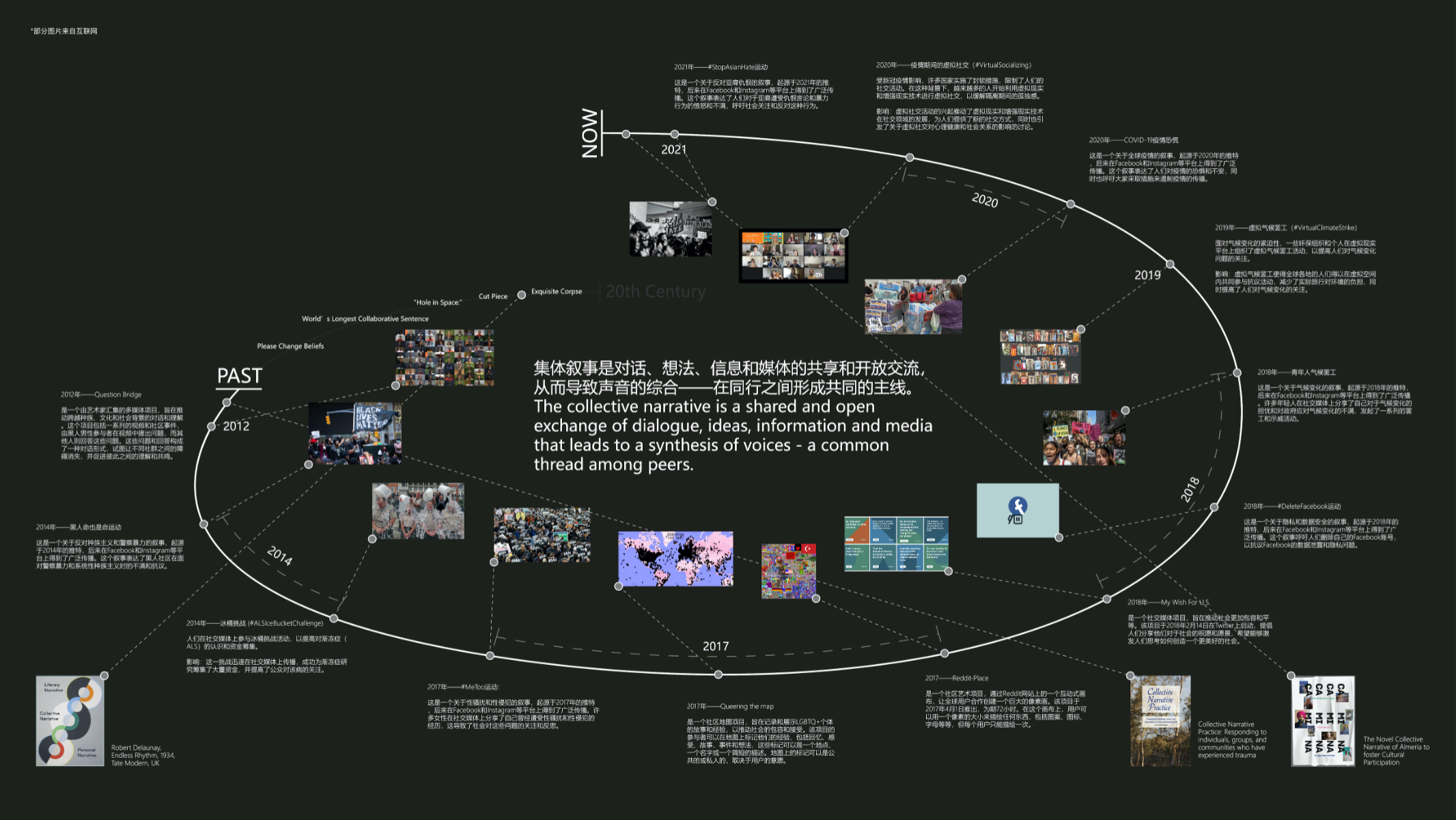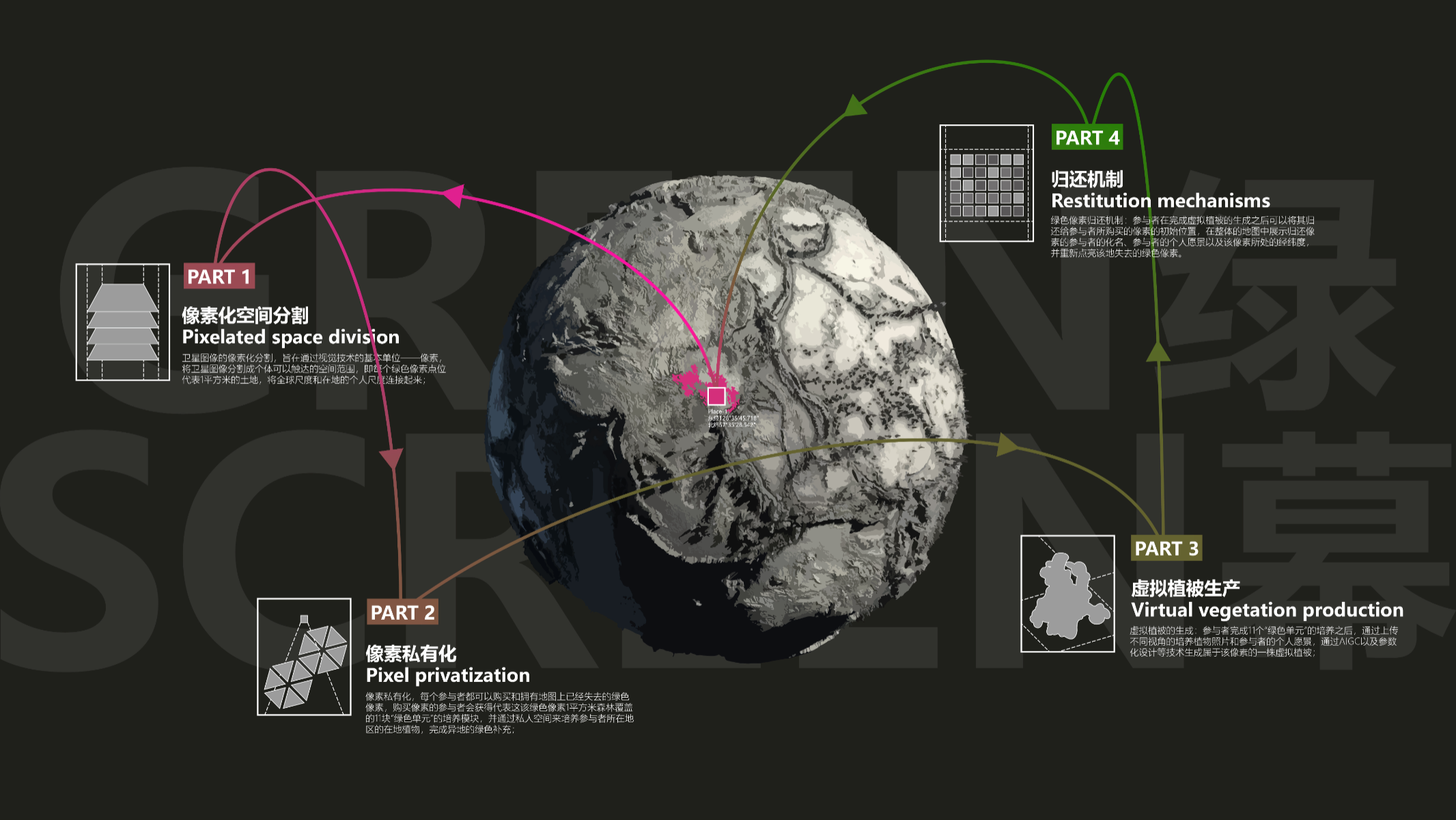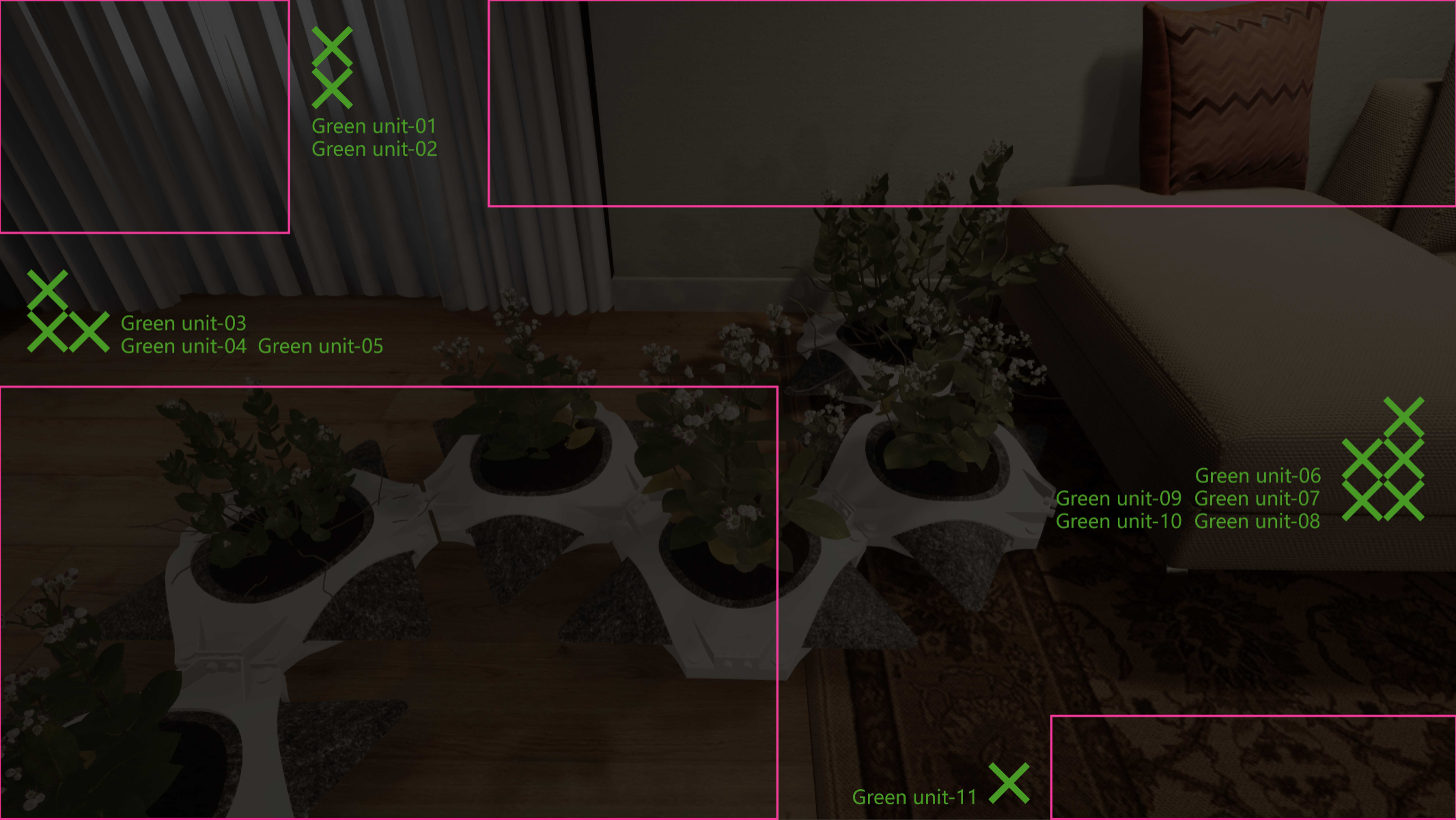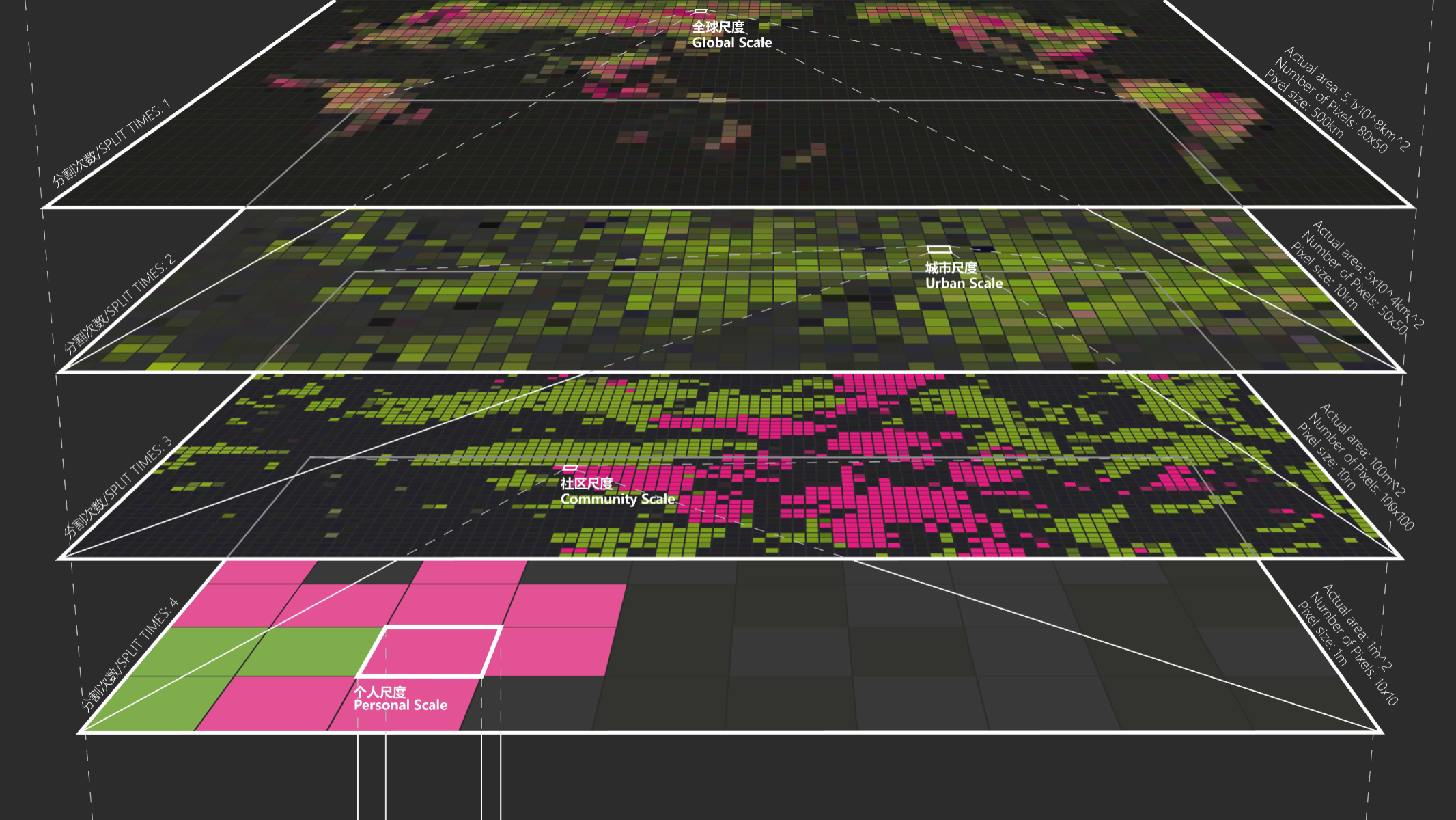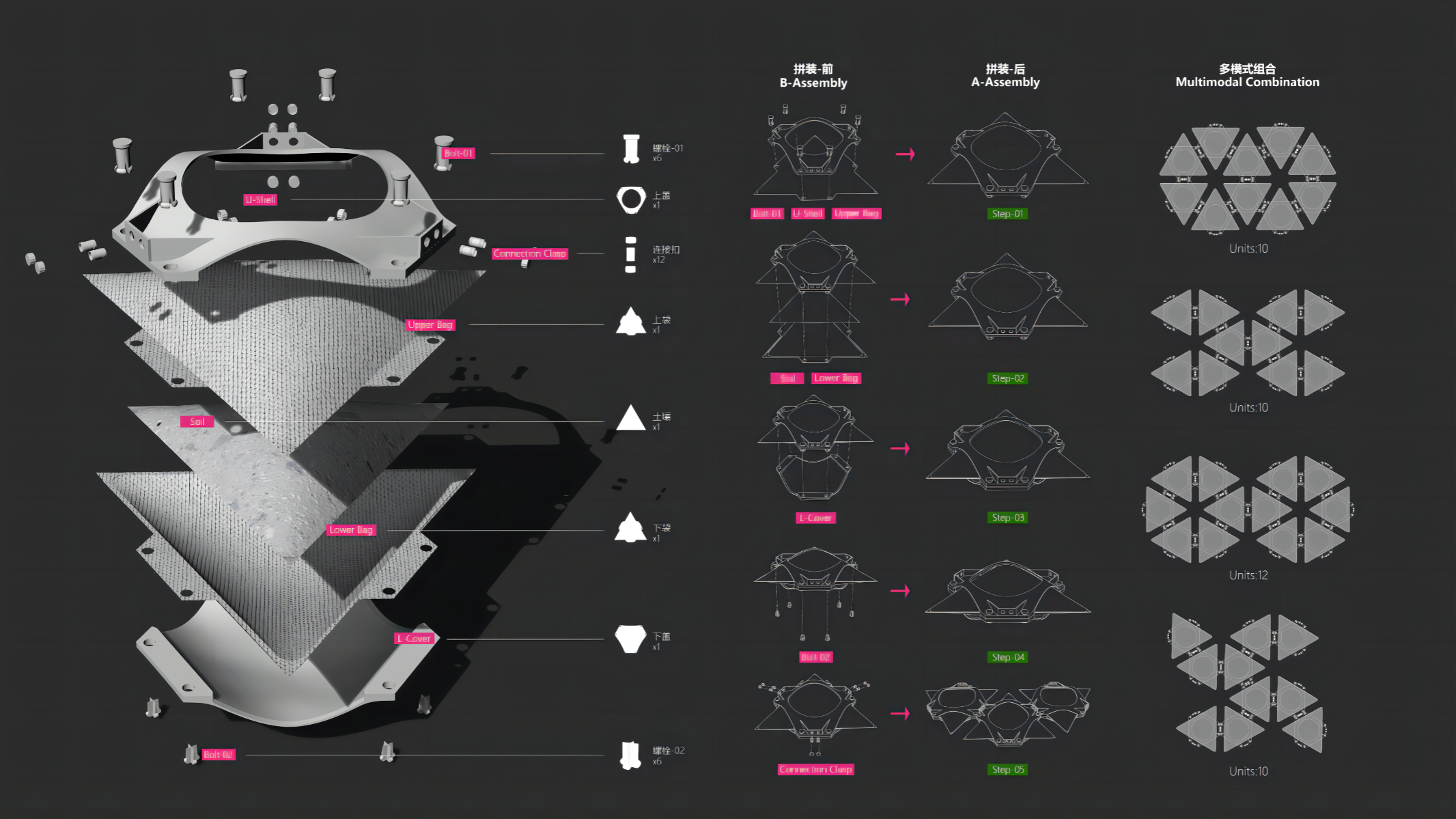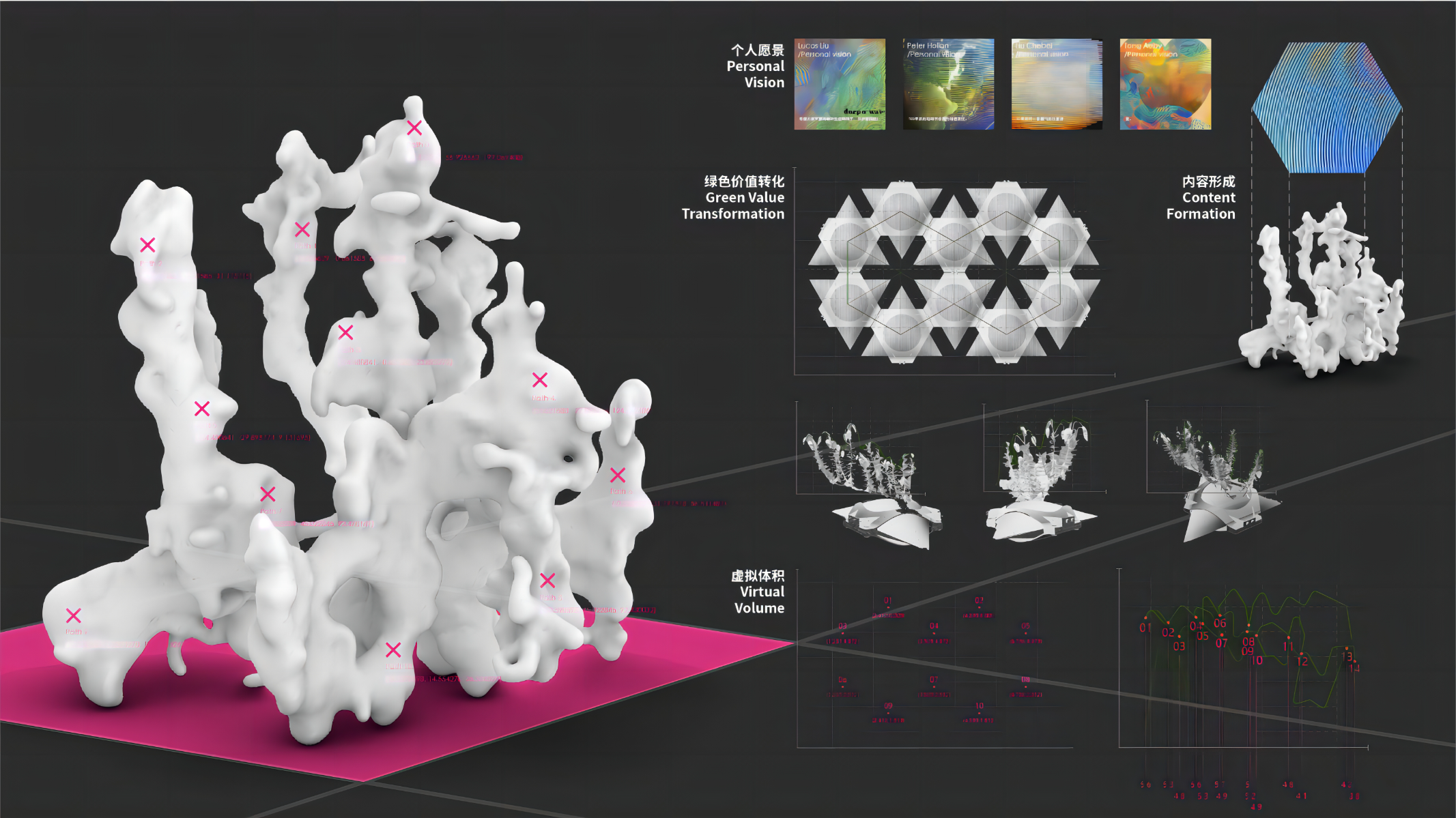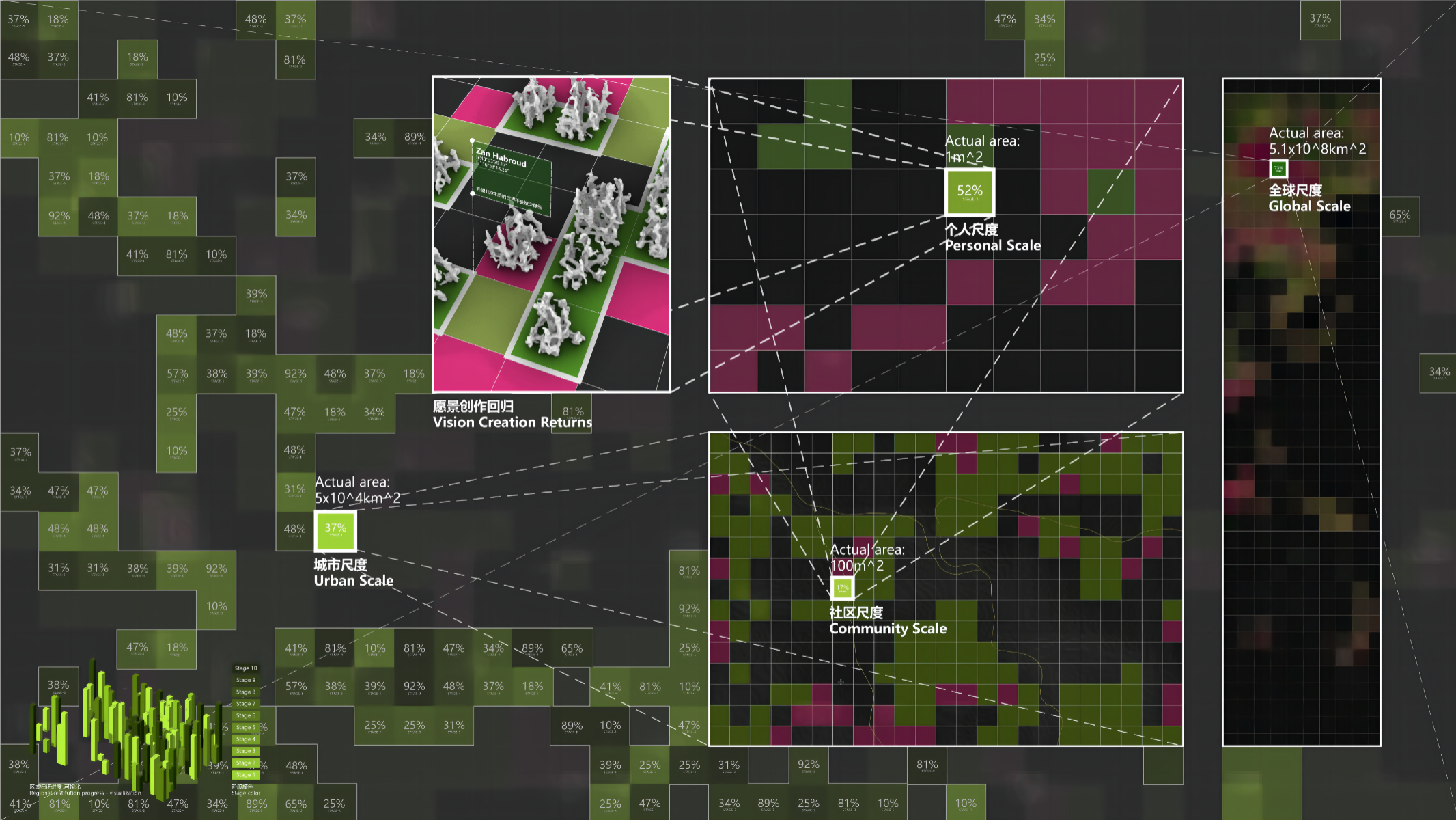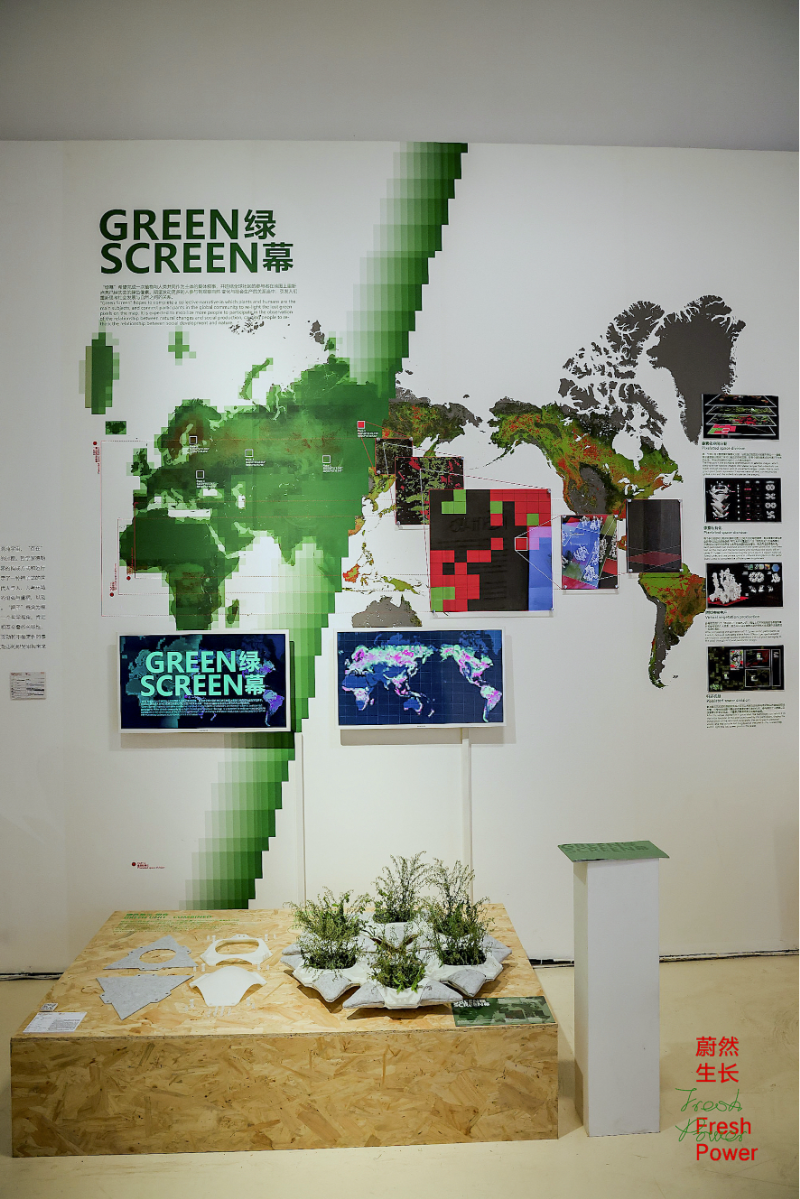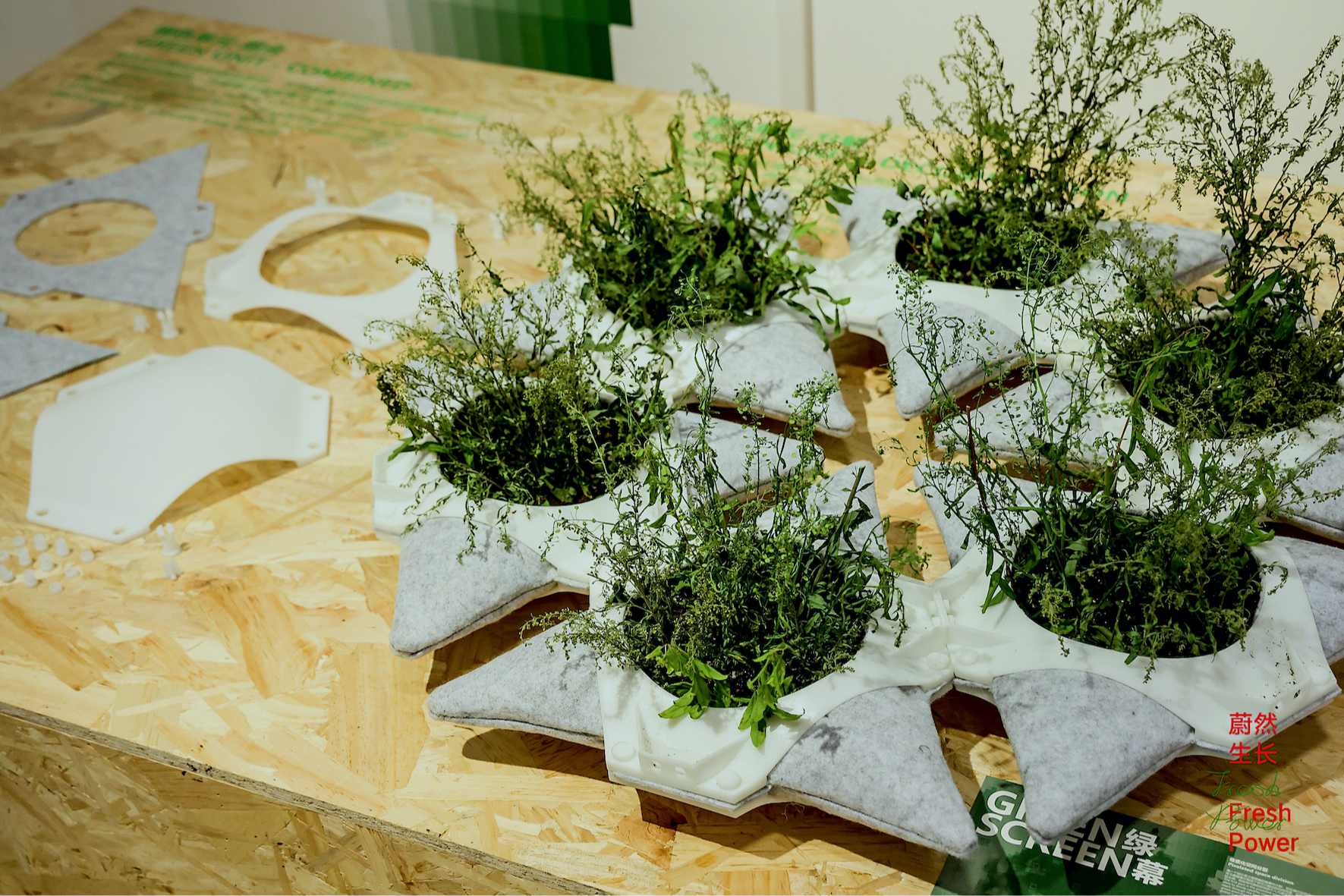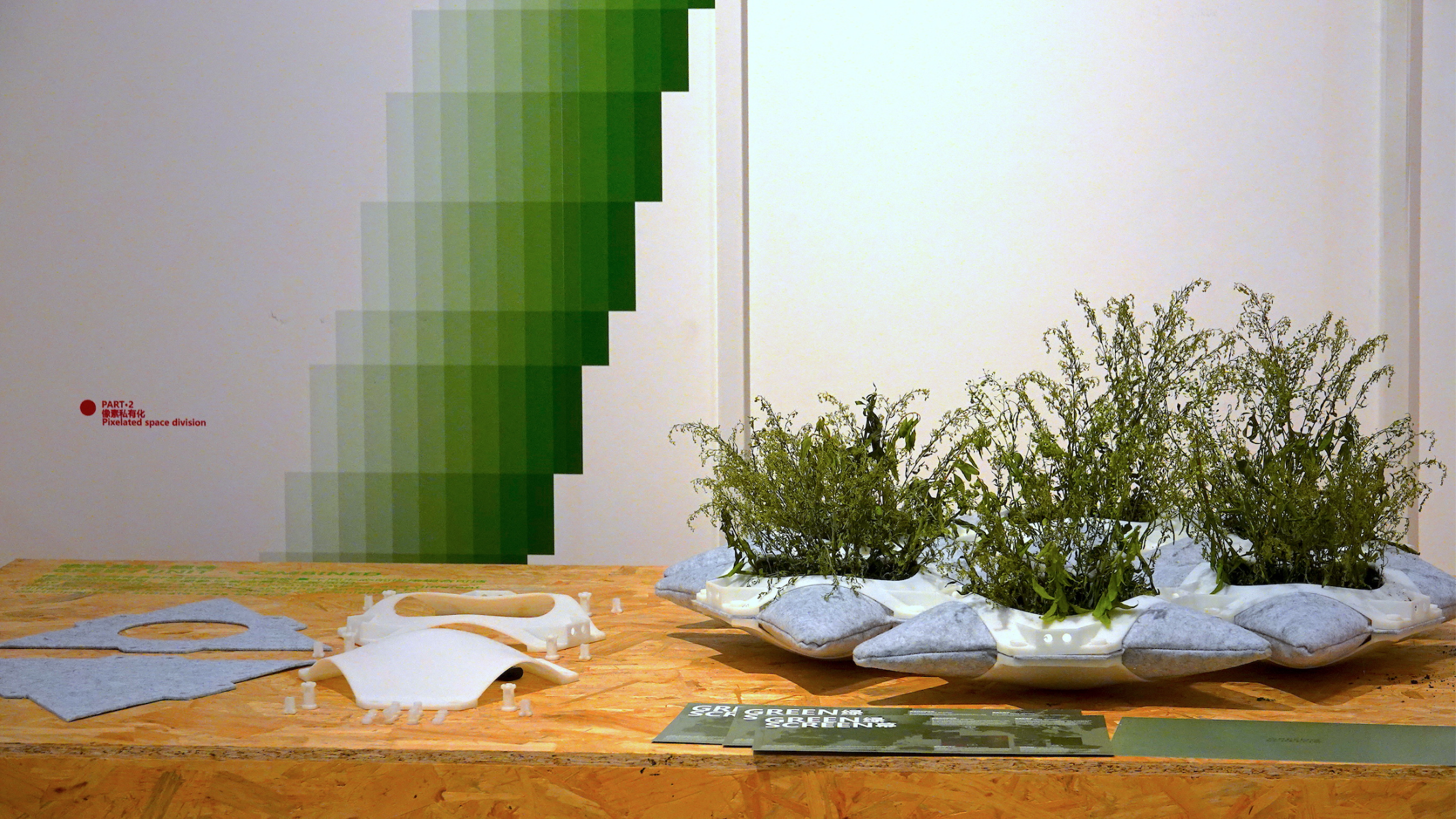Songye Tan
INNOVATIVE DESIGN
Central Academy of Fine Arts CAFA
Specialisms: Creative Direction / Digital / Visual Comm / Film / Product Design
Location: Beijing, China
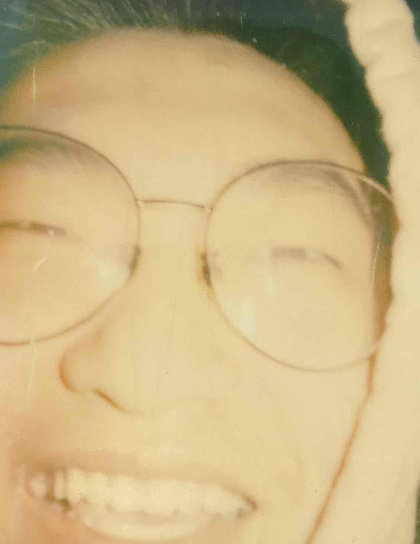

Songye Tan

First Name: Songye
Last Name: Tan
Specialisms: Creative Direction / Digital / Visual Comm / Film / Product Design
Sectors:
My Location: Beijing, China
University / College: Central Academy of Fine Arts CAFA
Course / Program Title: INNOVATIVE DESIGN
About
成!
"Green Screen" hopes to complete a collective narrative in which plants and human beings are the main subjects, and to connect participants from the global community to re-light the green pixels on the map of the 100 million square hectares of forested areas that have been lost in the 21st century on the global satellite imagery. The project aims to mobilize more people to observe the relationship between natural change and social production, and to stimulate people to rethink the relationship between social development and nature. The origin of "Green Screen" is the disappearance of green color on satellite maps in the 21st century, and it aims to observe the lost green area through the pixel, which is the basic unit of visual technology. The whole action is divided into four parts, pixelated spatial division, privatization of pixels, production of virtual vegetation, and return of green pixels. It is hoped that through the means of design, the global pixels will be divided, traded, transformed and finally returned to the green, accomplishing the off-site observation and replenishment of the missing green. The ultimate vision of "Green Screen" is to re-light the green pixels on satellite maps that have been lost since the 21st century through the joint actions of participants from different regions, and to trigger more participants to rethink the relationship between social development and natural changes. (The Green Curtain is divided into four parts. The first part is the pixelization of the satellite image, which aims to divide the satellite image into spatial ranges accessible to individuals through different pixel scales, i.e., each green pixel represents 1 square meter of land, connecting the global scale with the local personal scale; the second part is the pixel privatization, in which each participant can privatize the pixel. The second part is the privatization of the pixels, where each participant can buy and own the lost green pixels on the map, and the participant who buys the pixel will be given a cultivation module of 11 "green units" representing 1 square meter of forest cover of the green pixel, and cultivate local plants in the participant's area through private space, completing the off-site green replenishment. Green replenishment. The culture modules adopt a modular design that can be spliced together, in order to better adapt to the personal space and culture needs of different people. The third part is the generation of virtual vegetation; in the third part is the generation of virtual vegetation, after the participants have completed the cultivation of the 11 "green units", they will upload photos of the cultivated plants from different perspectives and their personal visions. After completing the cultivation of the 11 "green units", the participants uploaded photos of cultivated plants from different perspectives and the participants' personal visions, and then a virtual vegetation belonging to the pixel and the participant was generated through AIGC and parameterized design techniques. Each virtual vegetation is generated by the cultivation of different green units and the personal visions of different participants. The fourth part is the return mechanism of green pixels, where the participant can return the virtual vegetation to the initial location of the pixel purchased by the participant after completing the generation of the virtual vegetation, and the pseudonym of the participant who has returned the pixel, the participant's personal vision, and the longitude and latitude of the pixel will be displayed on the map as a whole. latitude and longitude, and relighting the location in green).
Competitions


